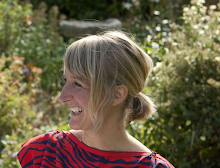
...it says inside my plastic yellow rickshaw. These noisy, fumey, bumpy little three-wheelers probably top my list of things that, after three months here, I now take for granted. Here are a few more: cows in the road; sleeping under fans; watching the sun set; sweating all the time; fresh coconut juice straight from the coconut; washing my knickers in a bucket; mosquito bites; having all the time in the world; chai; eating curry every day; colourful Gods on display in homes, shops, buses, trains, kiosks, stalls; beautiful faces; daily power cuts; speaking with an Indian accent so people understand me; and the most exhilarating sense of freedom.
I expect total strangers to ask, 'From where are you coming? What is your good name? Are you married? First time India?' Often, these are not conversation openers, they are facts that need gathering. Once gathered, a smile and a wobble of the head signifies the questioner is satisfied.
I am used to being in a country teeming with people. I now no longer huff and puff when I'm sitting on a train, squashed indecently up against my neighbours, five of us to a bench designed for three, when a rather overweight lady squeezes into the middle by essentially sitting on my lap. People don't flinch or tut or sigh when you knock them for six with your backpack, racing for a bus. It's what happens when there are over 1 billion of you sharing the same turf.
And it now feels completely normal to have rewarding, spiritual, deep conversations with almost anyone, at the drop of a hat. These can last two minutes or two hours. There's often no pre-amble: people here love to get to the serious, life and death stuff straight off. That, and a hundred other reasons, is why I love India.






